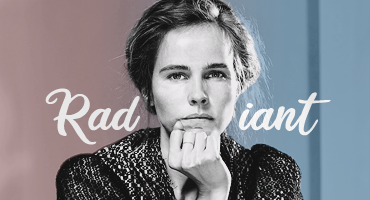
About six months ago, Michael Bay approached Digital Domain, the Academy Award winning special effects company behind movies like Benjamin Button, Titanic , and the The Fifth Element, with a last minute request. He needed a closeup. (WARNING: Minor Spoilers Ahead)
Image for article titled Why Just 2 Seconds of Transformers 2 Took 3 Months to Complete
Digital Domain was already working on some secondary characters for Transformers 2 while George Lucas’ Industrial Light and Magic building the main robots like Optimus Prime. Yes, Transformers 2 had such a big budget that DD was hired just to ride shotgun.
One key moment of DD’s handiwork depicts the transformation of a girl named Alice—played by actress Isabel Lucas—into a lethal robot. The main shot, seen above, uses digital techniques like advanced particle simulation (physics) to tear 10,000 pieces of skin away from a girl’s body—the kind of high-concept graphics that require lots of software know-how, and computers to do incredible amounts of heavy lifting. It was the sort of shot that showcased everything DD could do.
When Michael Bay saw it, he found it lacking.
After watching an early edit of the movie, Bay had decided that although the wide shot of Alice was nice, the film was missing a close-up—he wanted 40 frames of the girl’s face as she began transforming.
The close-up wouldn’t take as much as the full-body master shot. Instead of 10,000 pieces of skin, only about 50 had to move. But because of time, budget and manpower constraints, this animation had to be done the old-fashioned way—working by hand. It meant that five guys would spend the next three months of their lives on less than two seconds of the finished film.
Computer graphics supervisor Paul George Palop walked me through their process of crafting the “very, very painful” 40 frames.
The goal sounded simple: Transform this closeup of a human into a closeup of a robot. Alice’s face would begin to shatter away, revealing a gruesome creature underneath. But to model in 3D over digital film takes some prep work. To make the effect look real, the guys would need to map the 2D film original shot into digital 3D space. Then they could add all the neat robot stuff.
First, the DD team cut out all of the background and extraneous objects (including Shia LaBeouf’s head), isolating the female figure. It’s the first step of a classic technique known as rotoscoping, a trick that predates Disney, in which animators overlay cartoon characters and other animation on top of live action backgrounds. (Now that CG has blended humans and cartoons, it’s probably safe to say that there isn’t an FX-heavy movie made now that doesn’t involve some kind of rotoscoping.)
With the basic 2D work done, DD used a laser scan of Lucas’ figure to create a perfect 3D map. The rotoscope plate was then laid over this map, allowing the animators to work with real image depth and geometry. We don’t have that exact shot, so we stole a still from the later wide shot to make the point. On the right, you have the 3D body scan model. On the left, you can see the 3D applied to the 2D figure.
One artist worked solely on the little skin plates that cracked away around Alice’s mouth. Each of these 50 or so pieces was hand-animated, frame by frame, to create the short effect. But to enhance the illusion of movement, artists applied extra texture to the tiles along with some displacement mapping to each tile’s edge, which essentially complicates the square shape into an array of small triangles. (See how they look all jagged in the version on the right?) One the 3D-animated shapes were laid out, they had to be naturally lit, lest the girl’s skin look unnatural before she transformed completely into a metal monster.
In the meantime, the exact movements of the human Alice head needed to be applied to the newly animated robot Alice head, so that any movement from the former could be copied instantly in the latter.
Finally, all of the pieces were composited, rendered and placed on a newly drawn background. You’ll notice that beyond the obvious visual effects, artists beefed up Alice’s figure a bit. They rebuilt the end of her left arm and, while they were at it, added a bit more lift in the back of her hair. Even with a blockbuster megamovie deadline, there’s always time for last-minute styling.
After all of this meticulous work—three months of effort from digital effects masters—audiences everywhere got a bonus 40 frames of remarkable robotic transformation. Ironically, one of the movie’s chief complaints would be its length.
(To see images from the work, head over to the original source.)
 Welcome to Unicorn, your one and only resource for the talented Aussie actress Isabel Lucas, known from "Home & Away", "Transformers: Revenge of the Fallen", "MacGywer" and "Careful What You Wish For". Here you can find detailed information, exclusive high quality photos, all the latest news, as well as other multimedia such as videos, audio files and graphics. I hope you will enjoy the site, and don’t hesitate to get in touch if you have any questions or concerns. Make sure to bookmark us, and check back!
Welcome to Unicorn, your one and only resource for the talented Aussie actress Isabel Lucas, known from "Home & Away", "Transformers: Revenge of the Fallen", "MacGywer" and "Careful What You Wish For". Here you can find detailed information, exclusive high quality photos, all the latest news, as well as other multimedia such as videos, audio files and graphics. I hope you will enjoy the site, and don’t hesitate to get in touch if you have any questions or concerns. Make sure to bookmark us, and check back!

















